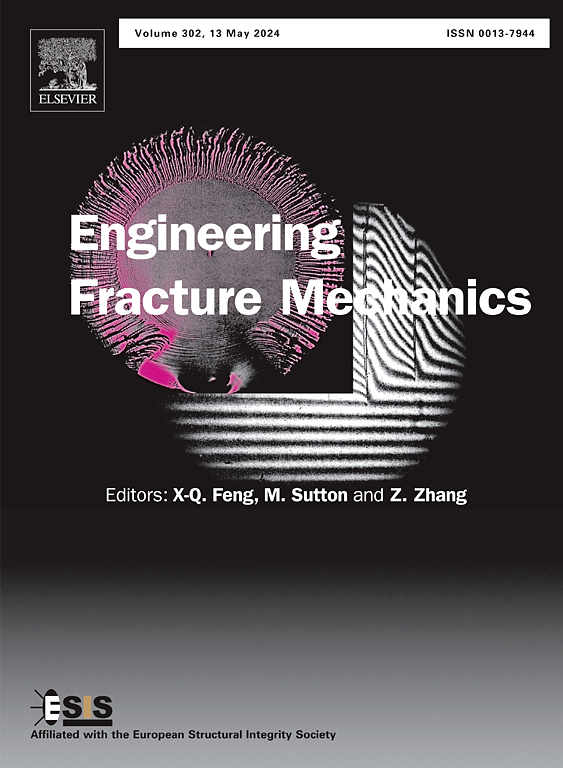Experimentally validated macro-mesoscopic simulation study on the fatigue short crack initiation and propagation in polycrystalline structure utilizing CP-XFEM
IF 4.7
2区 工程技术
Q1 MECHANICS
引用次数: 0
Abstract
The structural life assessment method based on short crack initiation and propagation is an important approach for predicting the fatigue life of engineering components. In this study, a macro-mesoscopic simulation method for short crack initiation and propagation in polycrystalline structures is developed utilizing the CP-XFEM approach. By incorporating random grain morphology and orientation, the model effectively captures the dispersion in crack initiation and propagation behaviors, including edge cracking, grain boundary cracking, and sub-surface cracking. The simulation uses the total cumulative plastic shear strain as the criterion for crack propagation and adopts the slip plane corresponding to the most active slip system to determine crack direction, accurately reflecting the slip-dominated propagation behavior of short cracks in Ni-based superalloys. The results demonstrate tortuous crack paths and fluctuating propagation rates along the slip direction. Comparison of simulation results with experimental data shows that the model predicts fatigue life with high accuracy, achieving error margins within 16% for verification group specimens. The alignment of life distribution between the test and verification groups further validates the reliability of this simulation approach for fatigue life prediction in engineering applications.
求助全文
约1分钟内获得全文
求助全文
来源期刊
CiteScore
8.70
自引率
13.00%
发文量
606
审稿时长
74 days
期刊介绍:
EFM covers a broad range of topics in fracture mechanics to be of interest and use to both researchers and practitioners. Contributions are welcome which address the fracture behavior of conventional engineering material systems as well as newly emerging material systems. Contributions on developments in the areas of mechanics and materials science strongly related to fracture mechanics are also welcome. Papers on fatigue are welcome if they treat the fatigue process using the methods of fracture mechanics.

 求助内容:
求助内容: 应助结果提醒方式:
应助结果提醒方式:


